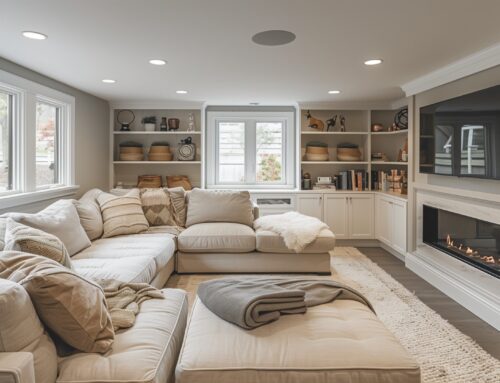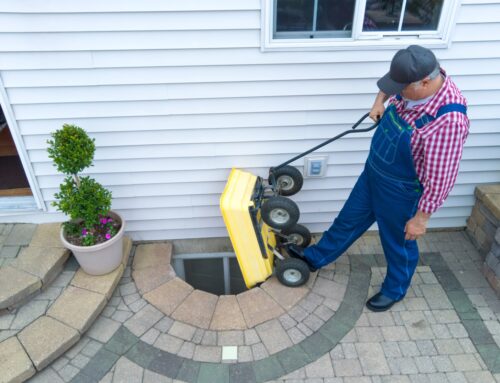When you decide to install an egress window in your basement, you’re not just investing in safety and home value — you’re also engaging with a complex landscape of local regulations and codes. While many homeowners imagine egress installation to be as simple as cutting a hole and dropping in a window, regulatory hurdles often prove to be the trickiest part of the job. But do not worry — at ItIsWell Egress, we’ve navigated these challenges dozens of times and can guide you seamlessly through the process.
Understanding Why Regulatory Requirements Matter
Regulatory compliance isn’t bureaucracy for its own sake. Building codes enforce consistent safety standards so that windows truly function as emergency escape and rescue openings. Failing to meet code can mean failed inspections, costly rework, or even denial of your basement as a legal living space. Moreover, when the time comes to sell your home, noncompliant egress windows may raise red flags with appraisers, insurance providers, or local authorities.
In essence, regulations protect lives — but they also protect your investment.
Major Regulatory Hurdles in Egress Window Projects
Here are some of the most frequent regulatory obstacles homeowners and contractors face — along with strategies we use at ItIsWell Egress to overcome them.
Meeting Minimum Size and Clearance Requirements
One of the most basic regulatory hurdles is ensuring the window and opening meet minimum dimensions. Under many codes (such as IRC R310 standards), the window must yield at least 5.7 square feet of net clear opening (or 5.0 square feet in special circumstances) in most jurisdictions. You also must satisfy minimum widths (for example, 20 inches) and heights (for example, 24 inches).
If the window’s sill is located below grade, a compliant window well must accompany it. The well generally must provide at least 9 square feet of horizontal area and a minimal width (often 36 inches). If the well is deeper than 44 inches below grade, a ladder or permanent steps are typically mandatory.
Designing a window or well that technically meets specs is one thing; executing it on-site is another. Soil conditions, foundation thickness, and underground utilities may force adjustments that require careful engineering and approval from local building officials.
Navigating Permit Delays and Inspections
Before any cutting or excavation can begin, you usually must secure permits. Most municipalities require you to submit detailed plans — including proposed dimensions, structural support details, and drainage plans.
Permit issuance can take several weeks. In our experience at ItIsWell Egress, obtaining engineering drawings and approvals often adds two to four weeks to a project timeline.
Once installation begins, inspections will occur at various stages: foundation cutting, rough framing, waterproofing and drainage, and final egress opening. If any step fails inspection, additional work or modifications may be required before proceeding.
Proving Structural Compatibility and Load Requirements
Cutting into foundation walls to install an egress window is not trivial. You must show that your design maintains structural integrity. That often means engaging a structural engineer, submitting load calculations, and sometimes adding lintels, steel reinforcements, or footings.
In retrofitted homes particularly, foundations may contain rebar, poured concrete of unknown makeup, or load paths that don’t align neatly with your desired window opening. In those cases, the regulatory review must address how the alteration remains safe under load.
Water Management, Drainage, and Waterproofing Restrictions
Local codes often require detailed drainage planning for window wells. You may need to show that water runoff will not seep into your basement or undermine the foundation. That involves:
- Designing a gravel trench or drain tile tied into your perimeter drainage system
- Ensuring the well’s bottom is fully drained
- Applying proper waterproofing, flashing, sealants, and backfill methods
If your jurisdiction is in a flood-prone or high-water area, additional waterproofing or sump-pump provisions may be required.
Clarifying Emergency Egress Access and Safety Features
Some codes demand that the window open fully with no obstruction, without special tools or screens that impede emergency exit. The regulatory review may require that security bars or covers have quick-release mechanisms or that well covers be easily removable from inside.
Additionally, the well may not allow encroachments such as ladder treads to intrude more than six inches into the required horizontal dimensions.
Addressing Existing Conditions and Variances
Older homes or unique site conditions often don’t conform neatly to modern code. When standard solutions won’t work, you may need to pursue a variance or alternative compliance path from the local building department. That requires detailed justification, engineering support, and potentially more expense.
We have seen cases where local inspectors approve a slightly modified well shape or ladder placement so long as safety is maintained and the escape criteria are met.
How ItIsWell Egress Helps You Overcome Regulatory Roadblocks
Because we specialize in egress window and well installations, we bring a systematic approach to handle regulatory challenges — so you don’t have to go it alone.
- From the start, we plan your project around code compliance and size windows and wells to exceed minimums.
- We coordinate permitting, engineering review, and inspection schedules so that everything flows smoothly.
- For complex structural work, we bring in engineers and provide stamped plans for approval.
- We design drainage systems and waterproofing that meet municipal ordinances.
- We work proactively with inspectors, addressing concerns early to avoid costly rework.
- We keep you informed throughout so you understand timeline risks and contingencies.
Ultimately, our goal is that your egress window passes inspection cleanly, gives your basement legal status, and provides the reliable escape route you need.
Moving Beyond Regulations to a Safer Home
Regulatory hurdles may feel frustrating, but they play a vital role in ensuring egress windows truly protect lives. The right design, thoughtful engineering, and experienced installation help translate rules into lasting safety and value.
If you’re considering egress window installation, the best path forward is to work with a specialist who knows your local jurisdiction and has a proven compliance track record. Let ItIsWell Egress be your partner in navigating those challenges — so your project is safe, legal, and stress-free.
Contact us today to set up a free consultation and permit-ready plan.







